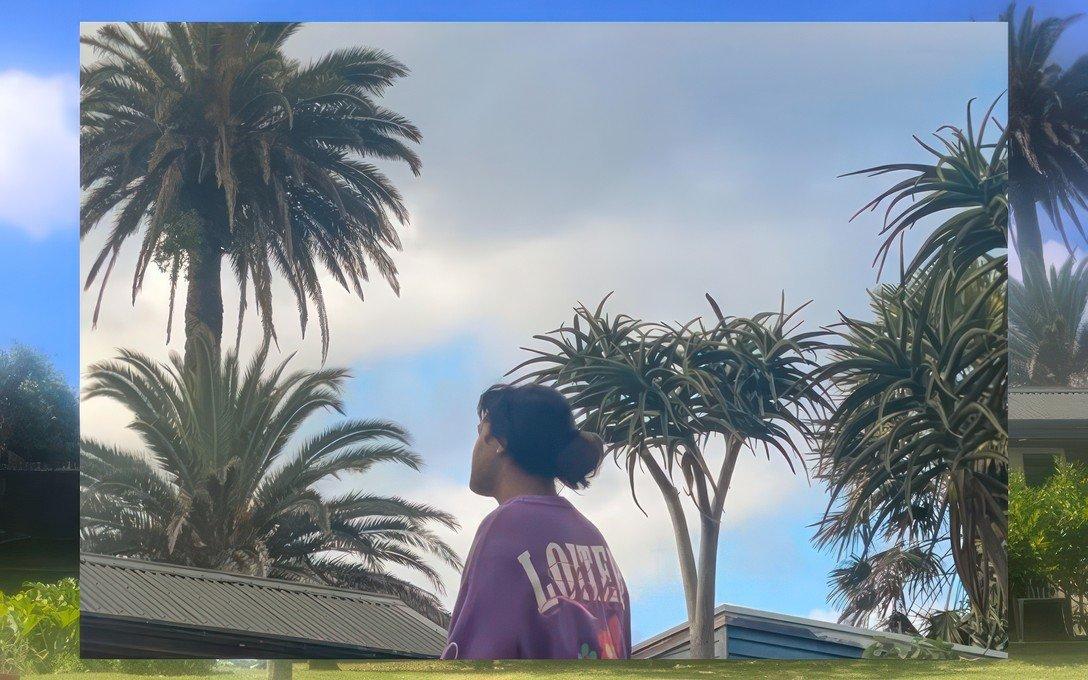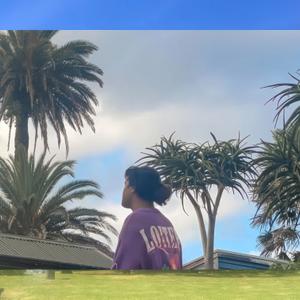As a child growing up in the church, I was taught how to self-scrutinise before I was even old enough to spell my own name. With each action, I would ask myself, "Will this help me get into heaven, or will it bring me closer to hell?" Every day, I kept a mental tally in fear of condemnation. This hangover from my years as a child of God has since morphed into the constant internal contemplation of my character. Though I no longer believe in eternal damnation or eternal life, I do sadly still keep tabs on my 'goodness,' which in our era of capitalism, unfortunately, gets muddled with my sense of my usefulness, productivity, and success.
Low Tide (2025), a film by Manu Vaea that was originally shown at Enjoy Contemporary Art Space in February and March of this year, brought me to think of my upbringing, and this unshakeable tic fixated on morality, which bleeds into all facets of my life and work.(1) In this film, Vaea considers the church as a channel that connects us with those who have passed, and that offers an ancestral pathway through religious ceremony. Though its principles still loom over her work, Vaea does not present this institution as an unmovable monument of judgement, but instead as a complex realm that is linked to her homeland and community.
Low Tide is a diaristic video that captures the everyday life of the artist, described by the gallery as "a contemplation of queer mundanity."(2) Vaea comes and goes between her flat, her neighbourhood, friends, family, and the church. Focusing on moments of personal reflection, in this work, Vaea contemplates maudlin thoughts—grief, acceptance, and loneliness. The mundanity that Vaea shares is both comforting and refreshing to observe. In the short text published by Enjoy to accompany the work, it is noted that she wanted to explore these melancholic thoughts in order to show the everyday emotions that don’t reproduce the violence that has been rife in representations of queer folk, and especially trans people.(3)
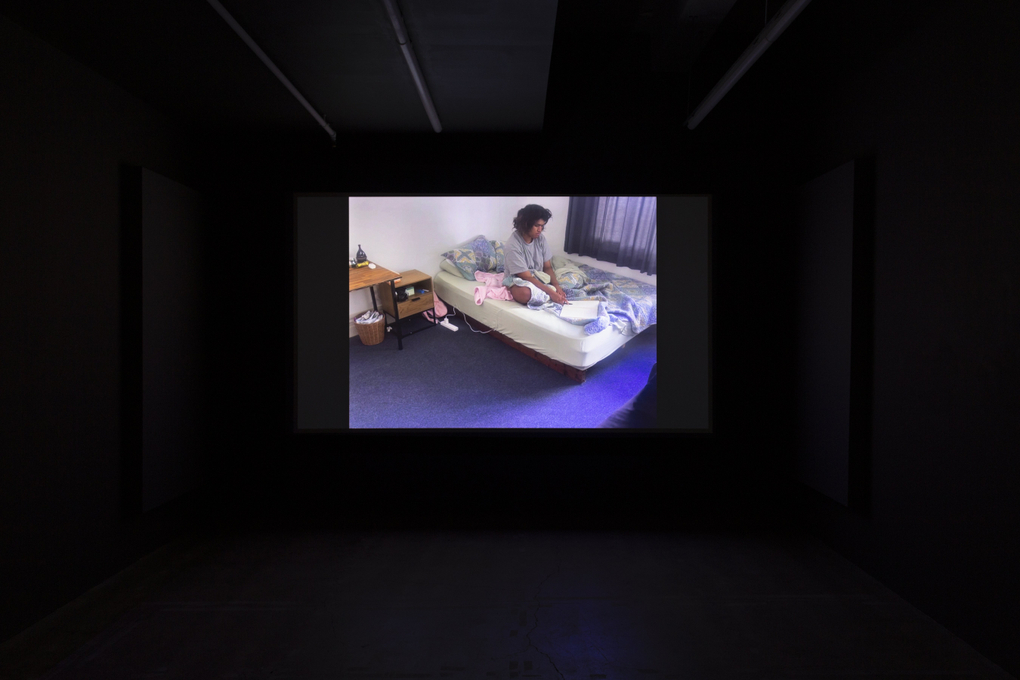
Manu Vaea, Low Tide (2025). Installation view, Enjoy Contemporary Art Space, Te Whanganui-a-Tara Wellington, 2025. Photo by Cheska Brown.
The film starts with a title card that reads "Low Tide" in yellow text, followed by an audible beep that marks the end of the take. Vaea cuts to a high-angle view, shot from the corner of the room, of the artist sitting on a bed; she is partially under the covers and holding a pen with a notebook placed in front of her. The furniture is minimal, with the kind of mess around that shows that this room has been lived in. The sheets are half tucked in, the pillows askew, and fluffy pink clothes are scrunched up on the bed and draped on the floor beside it. With her shoulders slumped in a baggy grey t-shirt, it is evident Vaea is at home here in her own bedroom.
She closes the notebook, moves the charger cord, and lifts the covers off her knees. The camera angle changes; we are now in front of the bed, as she sluggishly moves her legs off the side of the bed and sits there for a moment to scratch her head. She grabs a fabric headband from her bedside table, places it over her head and brings the front over her forehead to push the hair out of her face. We see these small, banal movements, and hear the shallow camera hum. Her bare legs and peachy-coloured underwear are visible as she stands up, and the scene cuts to a view of a backyard in soft focus. An image-scape of green, white, and blue, it shows a mirage-like sunny day with flourishing trees, an almost clear sky and a small bungalow to one side of the frame. Singing and chatter background this scene. I recognise this resonating chorus as undoubtedly the sounds of the church, and which interrupts the peaceful solitude of the artist's bedroom. The voices sing in a language from the Pacific; onscreen, the phrase "oku ou kei tengihia" appears in the same yellow text, which, when typed into Google Translate, becomes "I'm still crying." The quiet cocoon of solitude that Vaea has built in the film’s opening sequence is broken.
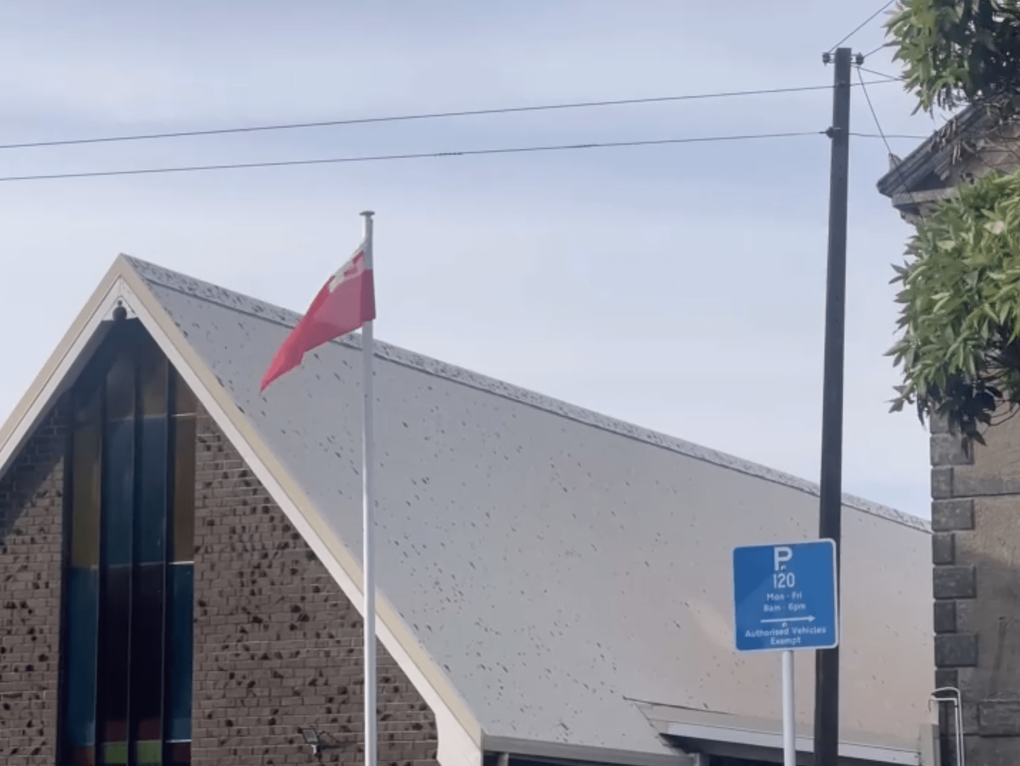
Manu Vaea, Low Tide (2025). Image courtesy of the artist.
Tonga is a presence throughout Low Tide. We see its landscape, we hear its language, and we see some of its people to whom Vaea introduces us, including herself. And as she says, "I don’t think Tonga as it’s understood today can be secular or removed from Christianity."(4) Different branches within the Tongan church accept or oust trans people, including those who identify as the Tongan third gender, fakaleitī, depending on their alignment or not with more conservative contemporary religious practice. In the 2018 documentary Leitis in Waiting, protagonist and Leiti activist Joey Mataele reflects on the particular nature of this island, stating: "Tonga is the last remaining kingdom in the Pacific. Out of all the Pacific Islands, Tonga is the only place that has never been colonised. We still keep our culture, we still keep our language, and we’re very proud of who we are."(5) In the same film, Reverend ‘Ahio of the Free Wesleyan Church of Tonga notes that "Christianity landed in Tonga in 1826. Local church is the centre of the local or the village community."(6) Before the arrival of missionaries to Tonga, homosexuality, non-monogamy, and non-cis gendered people were a normative part of culture; however, as Western Christian and Catholic religions became more prevalent, and latterly with the rise of evangelical Christianity, the perception of gender and sexuality has shifted within the fabric of Tongan culture. As Mataele says, "As soon as the missionaries came with the Bible, it changed a lot of things, but it’s not really the main churches that go against us. It’s the smaller churches that are saying things about us, especially the new evangelism that comes into our country."(7)
Next we see shots of Tongan church buildings around Grey Lynn in Tāmaki Makaurau, soundtracked by the atmospheric noise from the street. These scenes are jarringly quiet, especially when placed after the laughter and joy of Vaea spending time with her loved ones. At first, watching Low Tide, I felt these images and sounds of the church in the work indicated a strong presence of Christian doctrine. However, speaking with the artist, Vaea said that: "The church is like a thoroughfare between myself and an older Tonga that is mostly elusive and gone to time or violence."(8) She further wrote that the church is also a place where she shares in others’ grief and contemplation of death, mentioning that all of the audio from these sites were recorded during funeral services.(9) While we do not learn whom Vaea is mourning, in the film she mobilises this grief to reflect on her own life, her relationships, and purpose. In these moments of loss and death, Vaea seems to ponder her own life and personal connections, projecting those introspective thoughts into the visual and verbal monologue that this film forms.
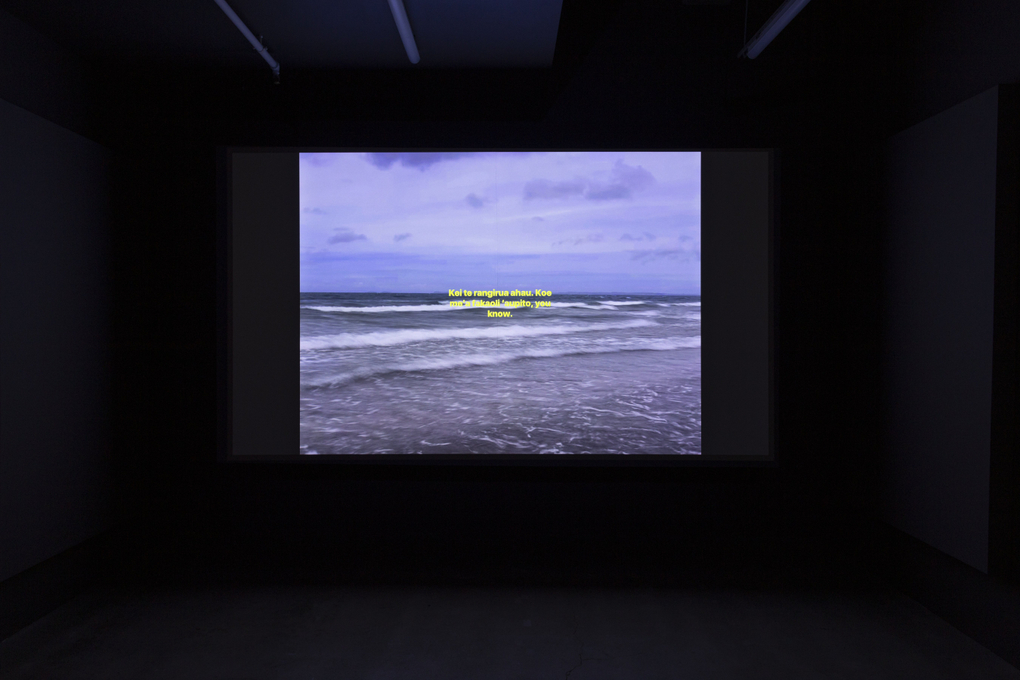
Manu Vaea, Low Tide (2025). Installation view, Enjoy Contemporary Art Space, Te Whanganui-a-Tara Wellington, 2025. Photo by Cheska Brown.
After these images of churches, Vaea interestingly turns to the ideas of Enlightenment-era philosopher Immanuel Kant, via the contemporary theorist Sara Ahmed. Vaea narrates lines from Kant as quoted by Ahmed in her 2006 book, Queer Phenomenology: Orientations, Objects, Others, while showing the viewer the crash of ocean waves. In this text, Ahmed discusses the meaning of 'orientation' in relation to queerness and sexuality, drawing from Kant’s 1786 essay 'What Does It Mean to Orient Oneself in Thought?,' while at the same time critiquing and expanding upon its presumptions of objectivity. As she writes, "Orientations shape not only how we inhabit space, but how we apprehend this world of shared inhabitance, as well as 'who' or 'what' we direct our energy and attention toward."(10) Though Ahmed is referring to Kant’s theory relating to orientation and space, it curiously brings in Kant as a figure whose fixation on secular value systems is at odds with images of the Christian cross and sounds of religious song. By contrasting sacred and secular value systems, Low Tide poses the question of where Vaea positions herself in relation to this spectrum. In several other moments in the work, we see moments that reflect Vaea’s personal investment in and enactment of her own system of values within her community. Low Tide includes clips of Vaea participating in Hīkoi mō te Tiriti, protesting the Treaty Principles Bill, and in Ballroom events, and even at Wheke Fortress, giving encouragement and pointers to young girls learning how to walk Ballroom.
While finding refuge in the church as a connector turns Vaea towards the past, her orientation in Low Tide also exists in the present, directed towards her community of queer creatives. She shows herself with her flatmates, milling around their home, and with her friends out at exhibition openings. While we are often restrained around our elders—especially those within the church—when amongst our peers in the queer art community, these poised facades shift. Sometimes, these relationships become complicated by the collaboration needed to create work. Vaea contemplates this in a text published by The Big Idea, asking, "How long have I been trying to settle this subconscious fear of being misinterpreted and abandoned? Have I been playing in bad faith, seeking connection as a means to affirm my own importance—that I am desirable, if not for my nature or my looks, then for my utility? I think what I’m asking is: Am I as insecure as I fear I am?"(11) Friendships become tied in with work, prompting us to question what our personal value is and whether or not we are delivering on what is expected of us. If these projects don’t go as planned, it is not only the work that is at risk, but the friendships involved, having a ripple effect that potentially collapses the community within which we have built a home. The hesitancy to avoid these kinds of fractures underlies Low Tide and is shown in the moments of quiet when Vaea orients herself inward, removing herself from the group to her own place of solitude. As Ahmed writes, "The question of orientation becomes, then, a question not only about how we 'find our way' but how we come to 'feel at home'."(12)
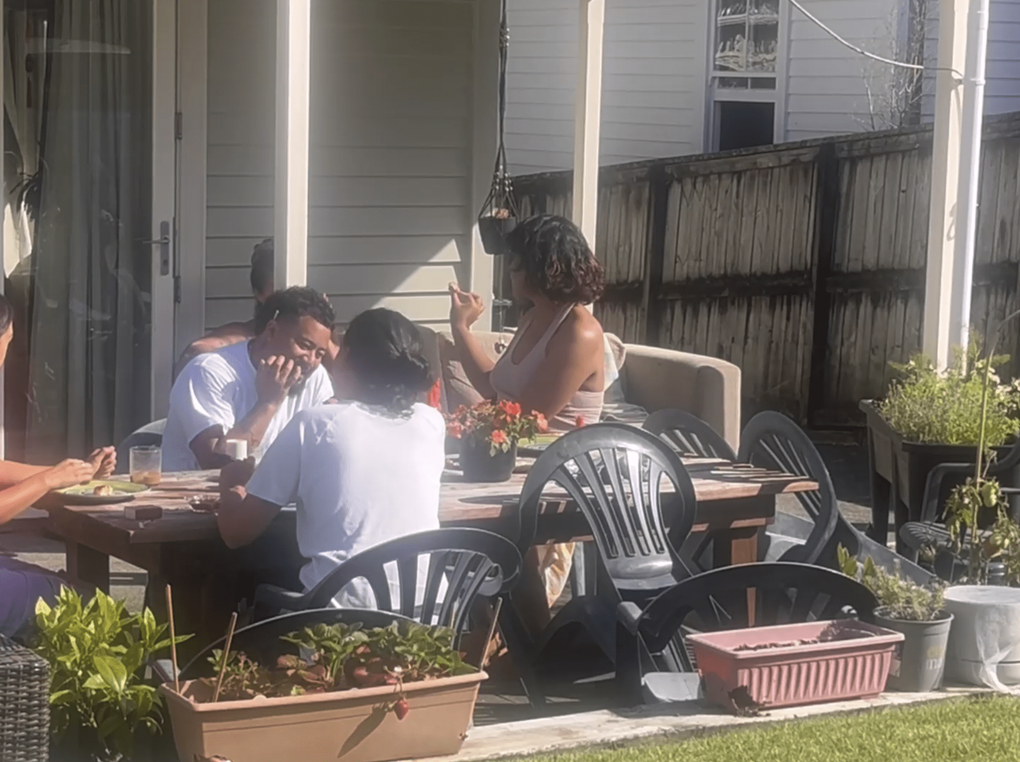
Manu Vaea, Low Tide (2025). Image courtesy of the artist.
In the outro sequence, Vaea types an inner monologue across the screen, contemplating her relationship with her parents, the life expectancy of transwomen, duty, obligation, and grief, specifically in relation to Tongan language and culture. Typing, deleting, typing, and deleting, as her friends do karaoke in the background. For queer folk of colour growing up in tight-knit communities that have religion at their centre, these questions of belonging, acceptance, and value are a constant. When we find communities that are more aligned with our identities, they similarly become an extension of ourselves—we still carry with us this learned instinct to serve the larger unit. These ideas of service, usefulness and goodness then translate into our longing to be deemed affable, desired, and needed by those around us. From a young age, these thoughts become so repetitive that they become second-nature, mundane, though still riddled with angst. Yet Vaea points to this in a flippant, almost offhand fashion: "Will I have a lover? Will I have a home? Will I have stopped beefing with my mum and dad? Lol. Ewwww cringe. Yucky. Lol that was funny."(13)
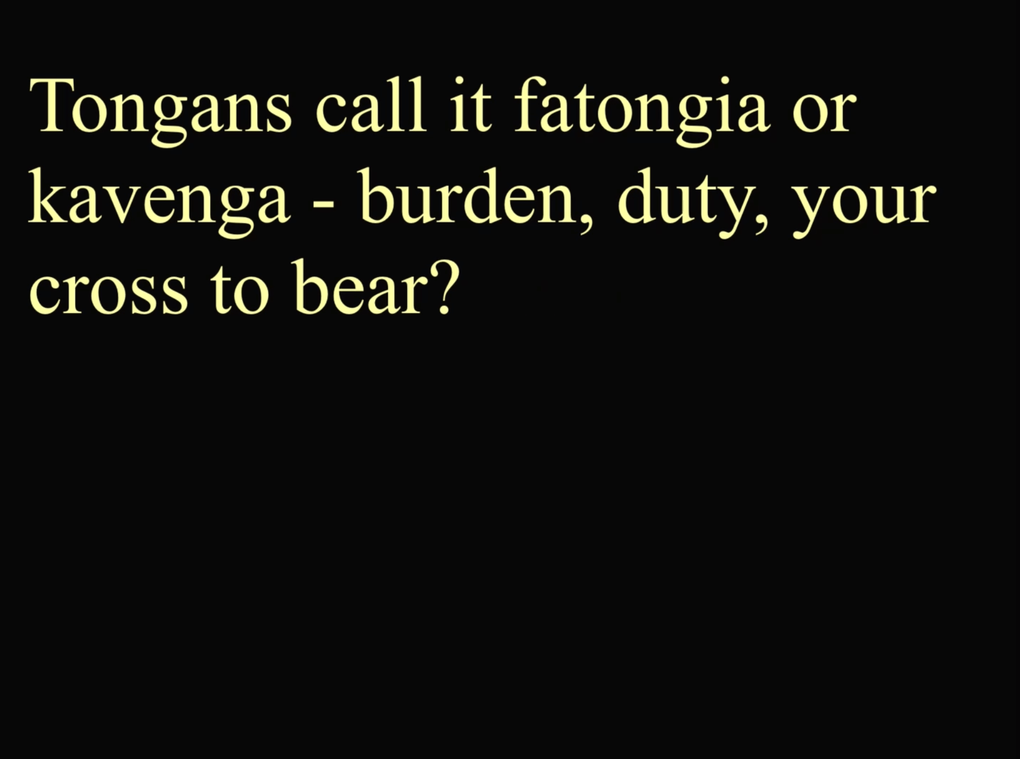
Manu Vaea, Low Tide (2025). Image courtesy of the artist.
As queer people in the church, we often have to find ways to censor parts of ourselves. But Vaea makes the choice to present herself as she is, and uses this honesty to build a complex, revealing, and curious portrait of herself. She does not don a costume or embody a character. Her diaristic lens shows trans and queer people not as characters or caricatures, not with tragic storylines or having to overcome hardship, but as themselves, in everyday situations, just being regular. For most people, and especially for those whose personhood is scrutinised, presenting oneself without a form of mask can be exposing. In finding our own communities, leaving behind these false personas can take practice, just as it takes practice to leave behind the guilt of religious teachings. As hard as we may work at this, the sense of obligation to those around us tends to be a difficult one to shake. Vaea shares with us these vulnerabilities and insecurities. She takes solace in the ceremonies of the church, its ritual and sacred nature, and in the act of rumination that these sites of worship encourage. Through this process, she is made introspective, questioning herself and her value to herself, those around her, and her sense of direction. Through its connection to the presence of loss, Vaea proposes a more gentle approach to the church, one where she offers up self-contemplation as an invitation, and not a commandment.
Manu Vaea: Low Tide was on view at Enjoy Contemporary Art Space in Te Whanganui-a-Tara Wellington from 15 February to 29 March 2025.
